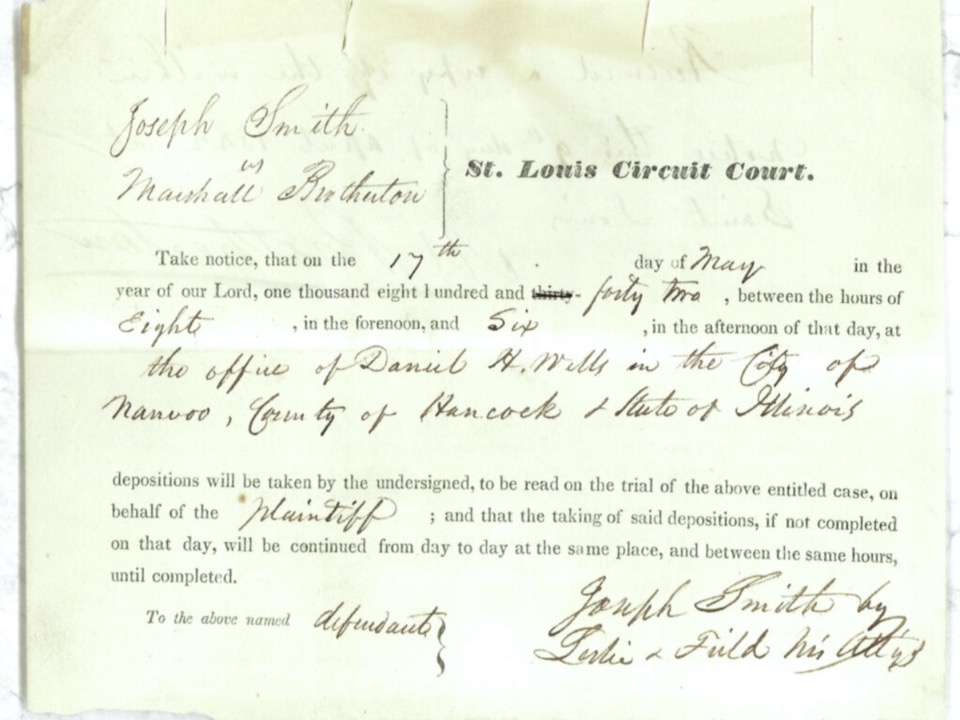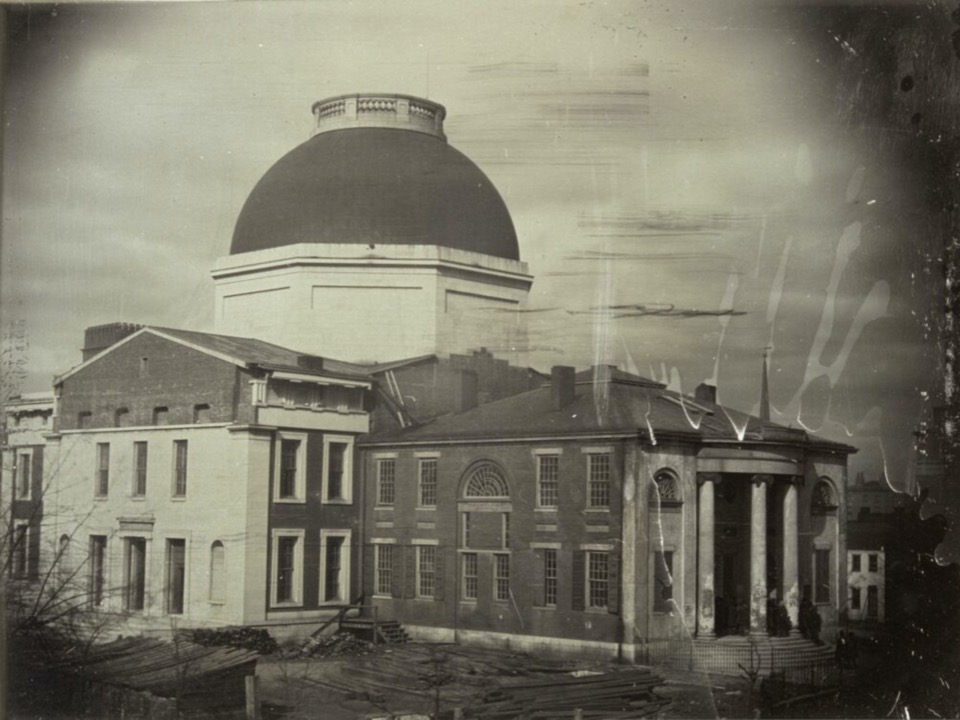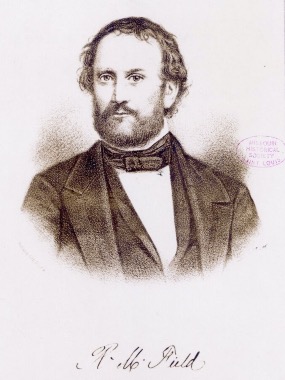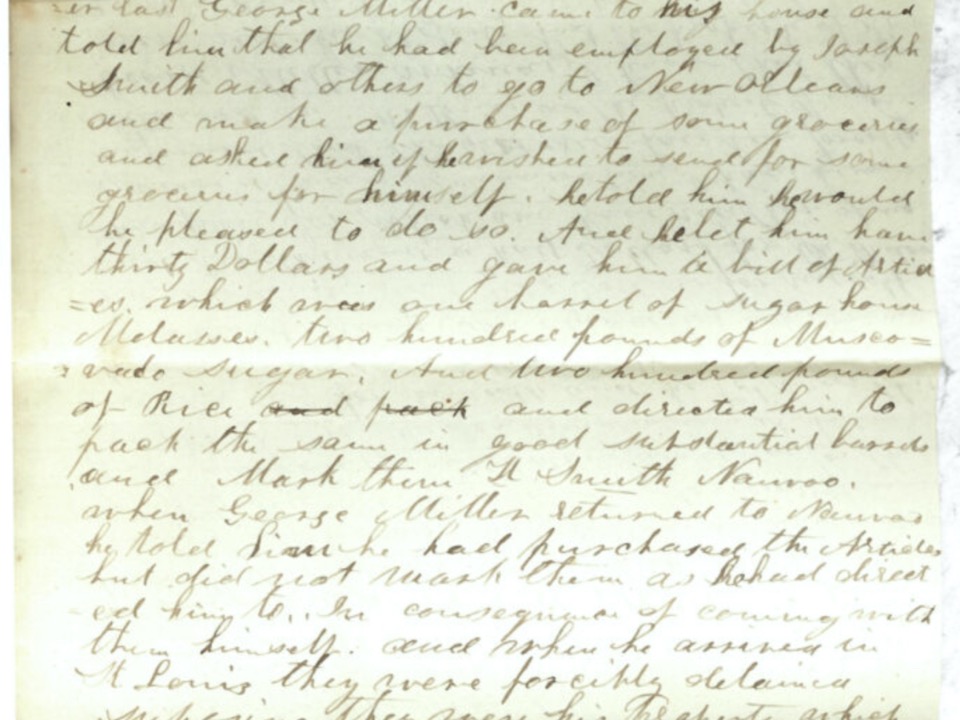
This story appears here courtesy of TheChurchNews.com. It is not for use by other media.
By Mary Richards, Church News
In October 1841, Joseph Smith sent some of his trusted agents to buy supplies for the store he planned to open in January 1842 in Nauvoo, Illinois.
One of those agents, George Miller, went south to New Orleans, Louisiana, to buy staples like sugar, molasses and rice. On the way back, two people in St. Louis, Missouri, to whom Miller owed money sued him to recover the debt. They attached the barrels of supplies to the lawsuit, causing the sheriff to seize the goods.
Joseph Smith then countersued, saying the goods did not belong to Miller, but rather to The Church of Jesus Christ of Latter-day Saints.
The documents, which include depositions about Church business and testimonies about the character of Joseph Smith and other Church leaders, were only recently discovered as court archivists went through old files and papers in the St. Louis court system.
“When I first saw it, I thought, ‘That can’t be the real Joseph Smith,’” said Bill Glankler, supervising archivist at the Missouri State Archives, St. Louis.
Glankler said he knew somewhat of the history of the early Latter-day Saints in Missouri, but the court papers showed him how deep-seated people’s prejudices were against the Church and its members at that time.
“Looking at the depositions, they claimed Hyrum Smith couldn’t be believed if he was under oath on anything involving Joseph Smith,” Glankler said. “It was a generic lack of trust, which was based on their prejudice. That’s what struck me. The value of that is an illustration that we know this; these are real people saying these things to be recorded in a court of law.”
Glankler’s staff connected with the Church History Department in Salt Lake City and sent them the documents.
Jeffrey Mahas, associate historian for the Church History Department, said this case had not been known about before — there’s no mention of the case in any other sources or in Joseph Smith’s journals, nor is there a record of the case in Nauvoo.
“We are really grateful that St. Louis reached out and sent us images of these case documents,” Mahas said.
Not only does it give more insight into how Church leaders and members were perceived during that time, it also gives another perspective of the business and dealings that Joseph Smith was part of in the 1840s in Nauvoo, Mahas said.

Insights from the Case
The packet includes Joseph Smith’s declaration that his attorneys submitted to the court, which starts the lawsuit. He hired the attorney team of Miron Leslie and Roswell M. Field as he worked to get back the supplies that had been purchased by Miller. Field later became famous for his representation of Dred Scott, the slave who sued for his freedom in a lawsuit that made its way to the United States Supreme Court in 1857.
The packet also includes sworn testimony from people in Nauvoo who say they gave their money to Miller so he could buy goods for the Church, or say they knew Joseph gave money to Miller. The names include Church leaders and prominent citizens from that time: John Taylor, Hyrum Smith, Orson Spencer, Henry G. Sherwood and Lyman Wight.

But Mahas pointed out, “The defense argument seems to be, you can’t trust any of these people.”
The witnesses for the defense were primarily former members of the Church who left during 1837 and 1838 — such as William Miller, Lyman Johnson and George Beebe — and a shopkeeper in Keokuk, Iowa, who was suspected of running a counterfeit ring.
“There’s a lot of antagonistic feelings there, a lot of anger there. Essentially their testimony is ‘you cannot trust a Latter-day Saint, you cannot believe a word they say,’” said Mahas.
“It’s kind of shocking,” he continued. “It makes sense if you understand that these are the raw emotions of people who have recently left the Church. There’s real tension and bad feelings behind their testimonies.”
While under cross-examination by Joseph’s attorneys, William Harris denied any prejudice against the Church. Yet Harris had written a book the year before attacking the religion.
“You expect that people are going to have biases that will be present in their testimonies or other documents. That is just part of what you have to wade through as a historian. What is unusual here is that many of these witnesses just come out and say it like that,” Mahas said. “They are swearing in court that Joseph and his associates cannot be believed because they are Latter-day Saints.”
Glankler said case files like these from the archives reveal important information about people’s relationships.
“A court action is by its nature adversarial,” he said. “You have folks suing other folks, you start to learn about their political relationships, their economic relationships, their social relationships, and that in turn tells you about the legal culture and the political and social culture of the county in which those files existed.”
In that way, the court documents become a significant source in trying to piece all that together from a historical perspective, said Glankler.
The other big argument in the case was this: What was Miller doing, and which hat was he wearing at the time?
In the 1840s, Miller was a bishop in Nauvoo, a financial agent for the Church, the president of the Nauvoo House Association and running a lumber mill in Wisconsin, all at the same time.
Joseph argued in court that Miller was his agent when he bought the goods. But others said he was working for the Nauvoo House Association.
Mahas said, “For the Saints, you would be hard-pressed to find a dividing line between all of it. These are all wrapped up together.”
This case also highlights the preparation work that was going into opening Joseph’s store in Nauvoo and how that connected to the other business of the Church. It shows how complex business dealings were in Nauvoo at that time.

The Outcome of the Case
About six months after the initial testimonies were given, John C. Bennett — another former Church member who became quite antagonistic against the Church — went to St. Louis and also testified against the Saints.
This seems to be the death knell for the case, said Mahas. The defense attorneys submitted Bennett’s testimony in September 1843, and Joseph’s attorneys stopped their work on the case, either because Joseph decided it was not worth it or because the attorneys believed they were not going to win.
Glankler said in the end the case was “declared a nonsuit.”
The goods were long gone by that point.
“Neither Joseph Smith nor George Miller got the property back,” said Glankler. “There’s a record in the file asking it to be sold before it spoils, and I can only speculate that’s what happened because there’s no other information about it.”
Glankler and Mahas believe the goods were probably sold to take care of the promissory note that Miller had written or to repay debts in St. Louis.
What’s Next
Mahas said the Church History Department is now working to transcribe the records and write a brief introduction explaining the case. Images and transcriptions of the case documents, as well as the introduction, are slated for publication on the Joseph Smith Papers website later this year as part of the Legal Records Series.
Meanwhile, Patricia Barge, a research analyst on Glankler’s staff who is a member of the Church, is also publishing more about the findings in the Friends of the Missouri State Archives publication, a biannual newsletter.
Glankler said discoveries like this — and many others made while sorting through documents from the 1800s — offer a wealth of information about the past.
“History is full of warts, I like to say. When we look at history we should see all of it, including the warts, because it all worked together,” Glankler said. “What happened in the past makes us who we are, and we need to know what that was.”
The case is Joseph Smith v. Marshall Brotherton, March 1842, No. 109, Case Files, St. Louis County Circuit Court, Missouri State Archives-St. Louis.
Copyright 2022 Deseret News Publishing Company.